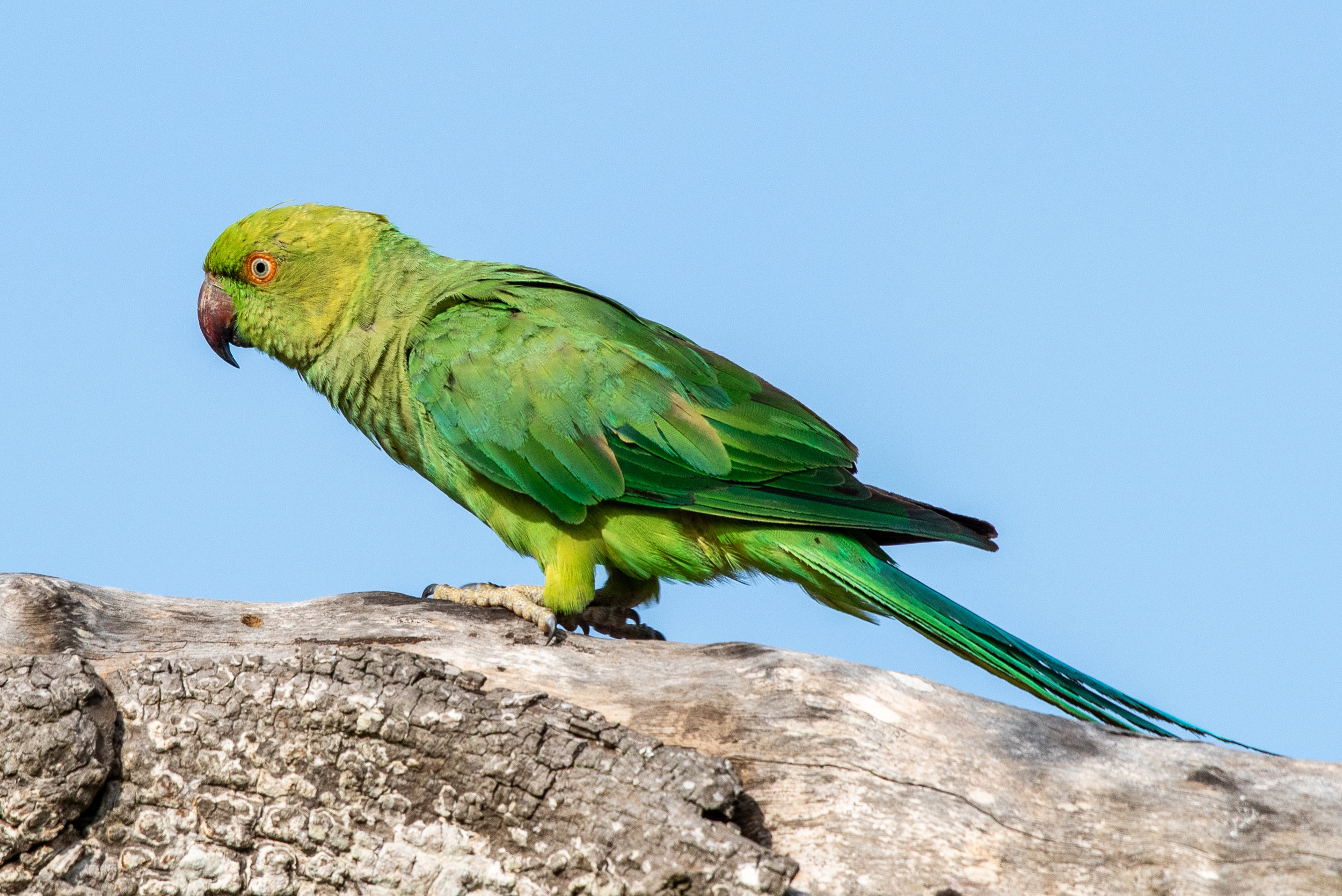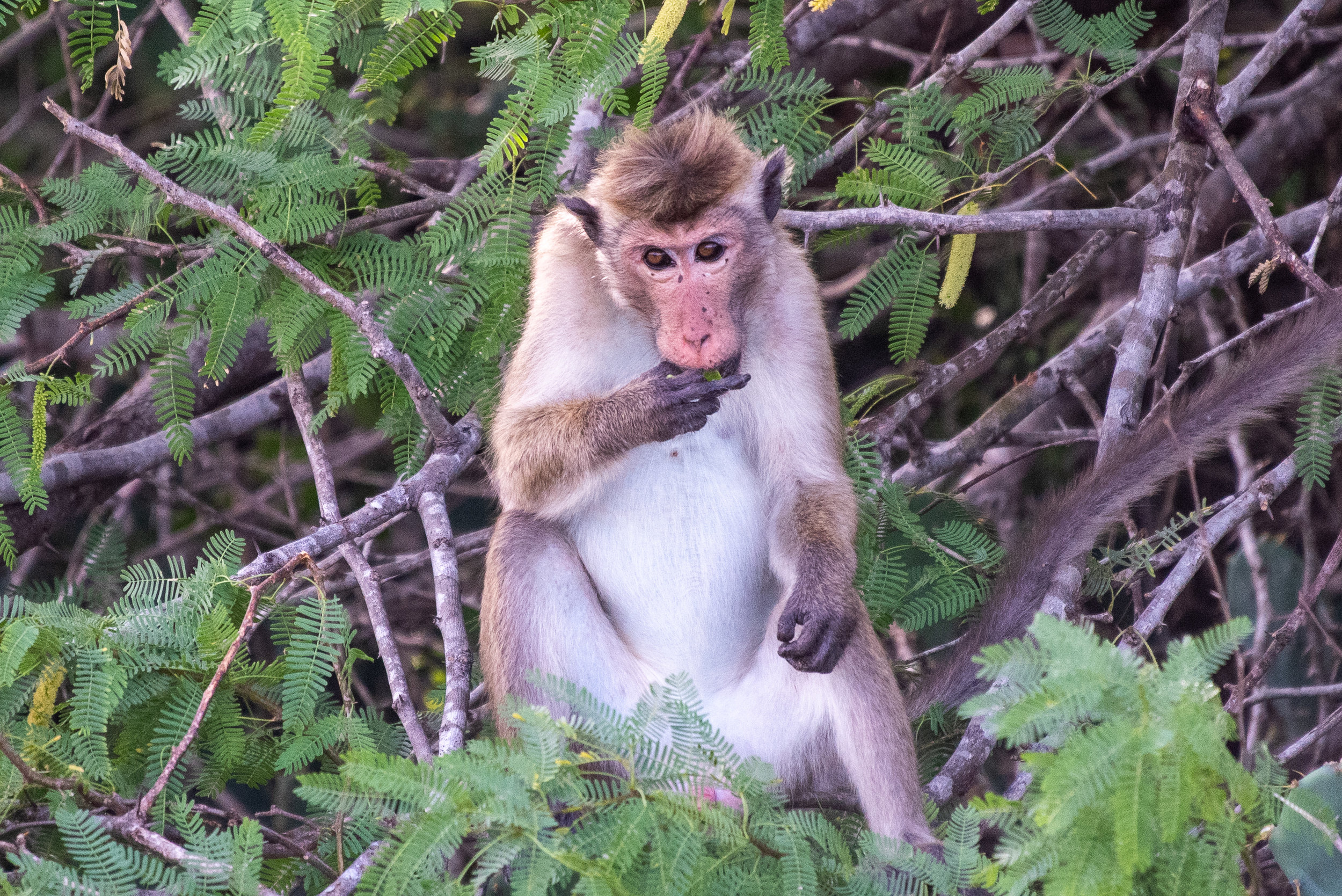Photos to follow later.
We had a super early start with a coffee and snack at 05:15 and in the jeeps at 05:30. The location for our morning’s safari was at the 3000 hectare Bundala National Park, some 40 km south-west of our camp at Yala.
The early morning drive was frequently impeded by severe speed bumps in the road and many dogs that seem to congregate and sleep on the road.
The road passed through several small villages with the coastal land being mainly rice paddies or coconut groves.
After an hour we arrived at the Bundala National Park’s entrance and were joined by local guides who in our case was Isuru.
The principal reason for visiting this park is for the aquatic birdlife and we very soon found that to be justifiable.
The path we followed was across a hard sand perimeter of a lagoon which had many bird species present and active in the soft early light; it was now nearly 06:30.
Lesser whistling duck with ducklings, Bundala National Park
Pheasant-tailed jacana, Bundala National Park
The sound of the lesser whistling (or Siberian) ducks was a delight and then to see at close range pheasant tailed jacanas was very special. We had encountered two other species of jacanas recently in Namibia but these Sri Lankan jacanas are quite different and equally attractive.
Purple swamphen, Bundala National Park
Glossy ibis, Bundala National Park
Ashy woodswallow, Bundala National Park
Tricoloured munia, Bundala National Park
Indian stone curlew, Bundala National Park
Rose-ringed parakeet, Bundala National Park
There weren’t many ‘new’ species sighted but the proliferation of birdlife was cause for joy. Amongst the species that we hadn’t previously sighted here were purple swamphens, glossy (all black) ibises, ashy wood-swallows, tricoloured munias, Indian stone-curlews and rose-ringed parakeets.
Little plover, Bundala National Park
Yellow-wattled lapwing, Bundala National Park
Amongst the less frequently encountered birds that we saw were purple herons, pipits, collared doves and little plovers. These plovers look very much like our Tasmanian dotterels and the lapwings here look very much like our Tasmanian plovers!
A little later in the morning we ventured into another section of the park and came across a pond about the size of a tennis court and in this small area there was bird activity aplenty. Amongst the herons, egrets, spoonbills, ibises and stilts were eight painted storks desperately fishing in the shallow waters.
Pond, Bundala National Park
These beautiful tall birds with their red legs, yellow bills, orange faces and pink tail feathers were scurrying around with beaks open just below the water surface and every now and then one would lift its head in triumph with a fish now firmly held in its beak. Some of the fish caught were big enough for the birds to have great difficulty swallowing and when this did eventually occur, we could see the large bulge passing down the bird’s throat.
Painted stork, Bundala National Park
Painted stork with fish, Bundala National Park
Intermediate egret & Painted stork with fish, Bundala National Park
Intermediate egret & Painted stork with fish, Bundala National Park
We followed along the coastline and became increasingly aware of a dreadful infestation of a prickly pear type of cactus that has caused terrible damage to the native ecology. This pest is so difficult to eradicate as even tiny traces of the cactus can lead to new plants regenerating.
Two species of monkeys were seen during the morning, namely Tufted gray (Black faced) langurs and Toque macaques. Male macaques have red faces while the females have white faces.
Tufted gray (Black-faced) langur, Bundala National Park
Toque macaque (red faced male), Bundala National Park
Toque macaque, Bundala National Park
At the conclusion of the morning’s activity we drove up onto a headland overlooking the Indian Ocean. There was a big swell rolling in and with the waves busting against the rocks below us, the thought of a quick paddle in the sea was utterly out of the question.
Fishermen’s camp on the coast, Bundala National Park
Coast, Bundala National Park
On our return trip to our Yala campsite we managed to get photos of two mongooses or should it be mongeese?
Mongoose, Bundala National Park
It was now 11:00 and we had brunch and said farewell to our camp hosts who had been so friendly and obliging during our three day stay. We were sad to hear them say that they have no further bookings for visitors for June or July due to the catastrophic events at Easter time.
We then rejoined our bus for the drive to Hikkaduwa where we’ll stay for the next two nights.
The four hour drive in dense traffic followed the coastline westwards passing through nearly continuous townships and the associated bustle of human activity and population overload.
We passed through Galle which we will visit tomorrow and then commenced a more northerly route up the coast to Hikkaduwa.
Before arriving at our hotel we visited a moonstone ‘mine’ for an hour. The area around Hikkaduwa is famous for its precious and semi-precious gemstones and moonstones (opalescent quartzite) are favourites.
The place we visited was a typical tourist trap with the pretence of a working mine but really it was a retail outlet for gems including moonstones.
When we arrived a display was put on where miners brought rocks to the surface from underground and washed the quartzite to separate moonstones.
Moonstone mine, Hikkaduwa
Moonstone mine, Hikkaduwa
Antiquated cutting and polishing equipment was then operated for our entertainment and then we were ushered into the only ‘real’ part of the operation, namely the sales showroom. As soon as we entered the sales area the charade of mining, cutting, polishing etc ceased and the workers then awaited the next lot of tourists to arrive!
In the sales area was a vast array of gems, most of which one supposes, had nothing whatsoever to do with this mine’s production or its personnel.
The goods on display varied from reasonably cheap stones to expensive mounted blue moonstones. After lots of haggling and decision making, a number of purchases were finally made.
We eventually arrived at our Hikka Tranz by Cinnamon hotel where security checks of bags was protracted and thorough. We all have ‘hospital type’ wrist ID tags to wear for the duration of our stay!
What a contrast! We’ve just had three days in camp with only ten tents where we were the only guests to this huge hotel with 436 rooms with hundreds of guests.
Our room is on the fourth floor overlooking the Indian Ocean which is spectacular but subject to a large swell and windy conditions.
Tomorrow we explore Galle Fort and then relax by the swimming pool at this plush hotel.























